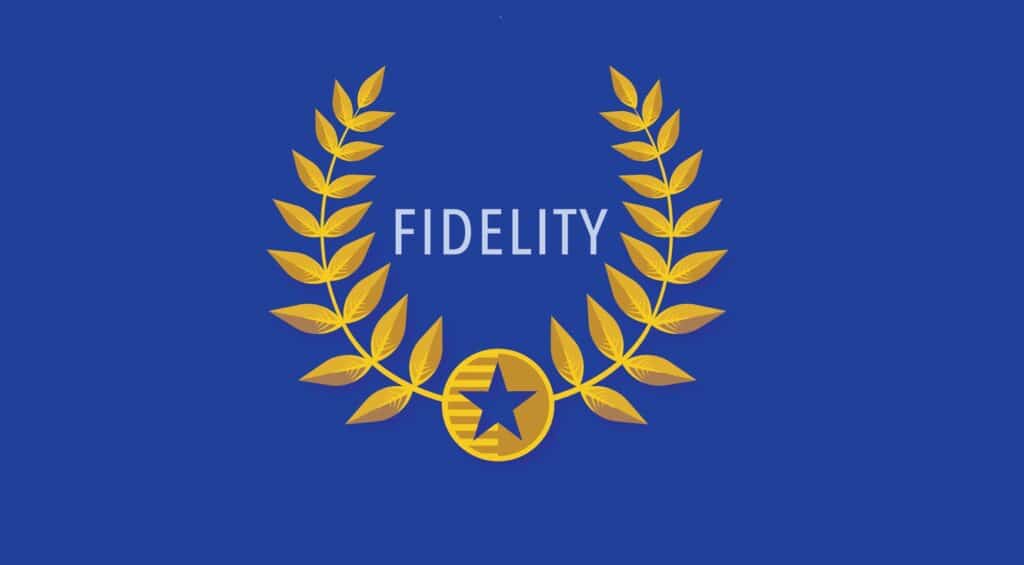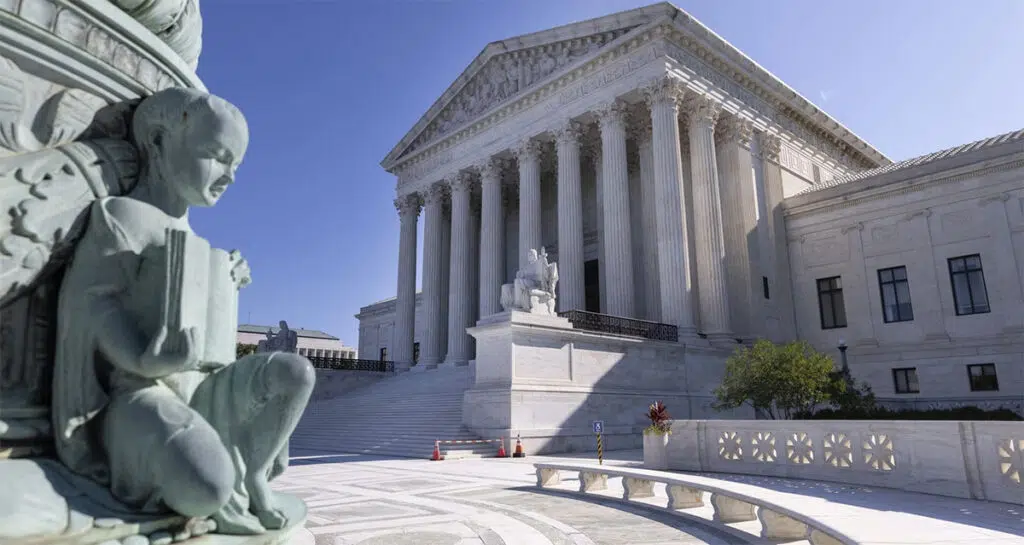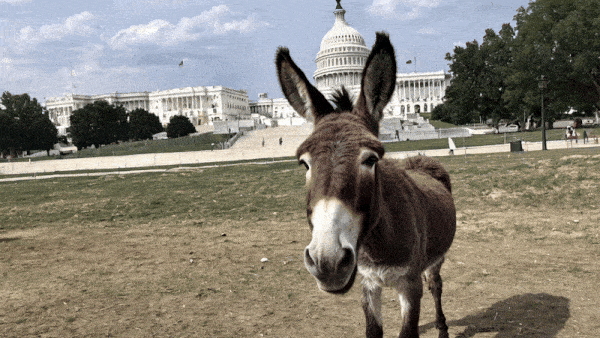
Fidelity Month: Needed Concept But Missing Something
Far be it for a writer for a publication dedicated to revived Americanism to critique a well-thought-out and good-intentioned idea — especially when promoted by a respected and renowned bastion of conservatism such as Heritage Foundation.
But Fidelity Month might need a little more time in the oven.
As a counterpunch to ubiquitous Pride Month celebrations, Dr. Robert P. George, a law professor and director of the conservative James Madison Program at Princeton University, recently declared June as Fidelity Month, “a month dedicated to the importance of fidelity to God, spouses and families, and our country and communities.”
The religion watchdog blog Juicy Ecumenism noted in a webinar for the launch, “compelling arguments for faithfulness to God, marriage, community, and country” were made. However, “reviving fidelity to these important institutions will not solve every problem in our country, but it’s a good start.”
In what strangely appears to be a cross between a U.N. and nascent Republic of Texas flag, the Fidelity Month logo depicts gold laurel leaves and an encircled gold star framing the word “fidelity.” Neither image screams grassroots, and it appears as academically generated as it is.
Nevertheless, Dr. George extends the welcome to “all who are interested in achieving this goal with the ultimate aim of helping to restore Americans’ belief in the importance of such values as patriotism, religion, family, and community — the values that used to unite Americans despite our many differences.”
Amen. And it’s at least something. The concept strikes at the root of what may be causing a large portion of America’s youth to eschew traditional roles of masculinity and femininity and question whether a binary marriage between a bride and a groom is something to be emulated in their own adult lives. More fidelity (faithfulness, in other words) in our homes might be just what the doctor ordered there.
As Christian author and speaker Dr. Jim Dennison noted upon the initial push for Fidelity Month, America is in deep when it comes to alternative sexuality. The cultural pushback exists in large and growing number, but it has been all over the map.
In addition to court orders that states must recognize same-sex marriage (even in cases where a majority of state voters oppose it), the cultural divide is still widening. The “#throuple” hashtag on Chinese-owned video-sharing service TikTok has 869 million views. Official opposition to forced and even secretive gender-transition procedures of youth is meeting mixed results in state legislatures and city halls. Now 7.2 percent of Americans per Gallup claim to be somewhere on the vaunted LGBTQIA+ spectrum.
This has been accelerated, Denison noted, by Marxist-inspired takeovers of academic institutions via Critical Theory, corporate ratings of inclusivity and diversity (and threats of boycotts and divestment if a company does not adopt an agenda of promoting certain ideas), and so forth. Anti-Catholic, anti-Semitic, and other hatred for religion is on the rise in the U.S.
The Christian faithful have responded in three ways, Denison wrote: 1) withdrawing from society to form Christian subcultures, 2) “fighting fire with fire” by engaging in militant “culture war” activities, and/or 3) promoting biblical truth in a winsome manner without mimicking the tactics of the radical Left. Fidelity Month, he said, satisfies the latter approach which has been favored by Evangelicals of many denominations.
But is that latter approach enough, and does that approach even work? Maybe in part, if the history of the rainbow flag and “Pride Month” may serve a roadmap for the opposition.
The famed riots at New York’s Stonewall Inn took place over several days beginning on June 29, 1969. But there was no centralized effort in following years to celebrate this as a “gay week” or some variant. Rather, and organically, commemorations of this struggle spread, and sometimes at different times of the year (supporters in Austin, as one of many localized examples, will celebrate in August). What brought it all together was a lobbying effort and the eventual capitulation of President Bill Clinton in 1999 recognizing June as “Pride Month” — an annual tradition broken by President Donald Trump in 2017, by the way.
So a combination of grassroots fervor, lobbying by legal and nonprofit organizations, and eventual political recognition. If we go by Denison’s analysis, the movement started off by socially ostracizing themselves, then “fighting fire with fire,” and later playing the good-guy. All three approaches came together here.
Now let’s take a look at the rainbow as a symbol: While the modern gay rights movement by-and-large did not cozy up to the purple or pink triangle as envisioned by thinkers earlier, the rainbow flag gained popularity in 1989 after an attempt by a West Hollywood landlord to ban it from an apartment balcony (the landlord lost). Previously it was a symbol popular among participants in gay pride parades in California and in other pockets of the social far-left dating back to the ’70s.
Lesson being: it took some passion from the hoi polloi to get the rainbow flag started, and a high-profile victory over perceived oppression to fuel its popular adoption.
If any of that sounds familiar then it should. That’s how many popular celebrations and symbols have spread. There are a couple of semi-recent examples of that. As the Tea Party Movement gained traction in the late oughties, a long-cherished symbol of resistance to oppressive government and high taxes — the Gadsden or “DONT TREAD ON ME” flag — went from school history classroom room decoration to symbol of the discontented right.
Speaking of Texas earlier, there is the matter of Juneteenth. Once an organic celebration among Black Texans recognizing the delayed arrival of the Emancipation Proclamation to Galveston (on June 19, 1865 — months after the War Between the States had concluded), over time it became intertwined with family reunion picnics and other joyous occasions of the early summer season. The sheer popularity of the day spread to Southern states and even outside of the region. And recently a Congressional bill made it a federal holiday. Sure, there were academics pushing for this goal, but they certainly weren’t the primary impetus of it.
All this to say: Fidelity Month, for it to spread like wildfire, will take a grassroots push to get it there, a prize fight to popularize the cause, and a well-oiled PR machine to sustain it. Again, all three of the tactics Denison identified.
Now that’s not to say an academic push aided by a well-known conservative thinktank to reform our most-valued institutions couldn’t make an impact. It most certainly can, and we hope it is! But for now it lacks a certain provenance that would make it a rallying point for a currently divided movement weary of the sexualization of children, the forced redefinition of marriage, and the growing marginalization of those who hold to biblical standards of sex. It’s hard to put a finger on because … well, you can’t (at first, anyway).
You can watch the launch of Fidelity Month below via YouTube:



